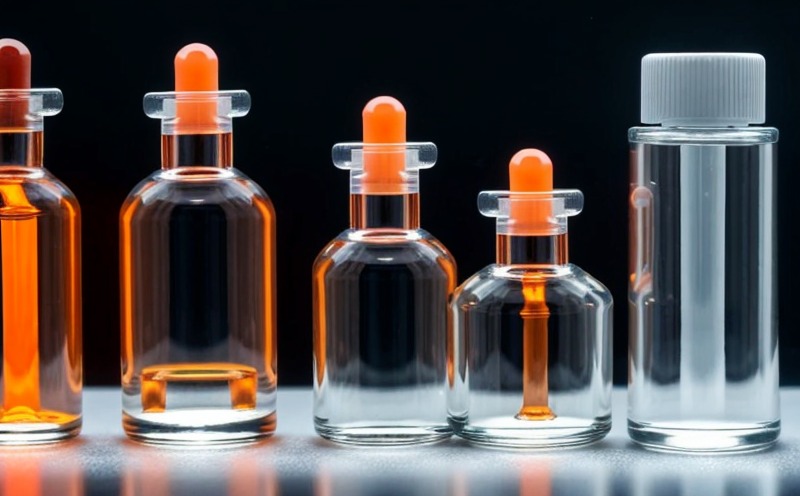DIN EN 482 General Requirements for Safety Measurement of Nanoparticles
The DIN EN 482 standard outlines comprehensive guidelines for evaluating the safety of nanoparticles. This includes assessing potential health and environmental impacts associated with the production, use, and disposal of these materials. The standard is particularly relevant in sectors where nanomaterials are used or produced, such as electronics, cosmetics, and pharmaceuticals.
Nanoparticles exhibit unique properties due to their small size and large surface area, which can lead to different behaviors compared to larger particles of the same material. These unusual characteristics make nanoparticle safety assessments critical for ensuring that products containing nanomaterials are safe for both human health and the environment.
The DIN EN 482 standard covers a range of testing methods designed to measure various parameters related to nanoparticle safety, including but not limited to inhalation toxicity, dermal irritation, and ecotoxicity. It emphasizes the need for accurate measurements and robust experimental designs to ensure reliable data.
One key aspect of DIN EN 482 is its focus on standardizing procedures used in nanotoxicological studies. This ensures that results from different laboratories can be compared consistently across industries and regions. The standard also addresses challenges specific to nanoparticle characterization, which are often more complex than those encountered with traditional materials.
The scope of DIN EN 482 extends beyond just toxicity testing; it encompasses a broader spectrum of safety considerations. For instance, the standard provides guidance on how to handle nanomaterials during sample preparation and analysis to minimize potential risks to laboratory personnel and surrounding environments. Additionally, it offers recommendations for interpreting test results in context with existing knowledge about nanoparticle behavior.
To comply fully with DIN EN 482 requires careful planning and execution of multiple steps throughout the testing process. These include selecting appropriate methods based on specific project requirements, ensuring proper calibration of instruments used in measurements, following strict protocols when preparing samples, and carefully documenting every stage of the experiment for reproducibility purposes.
The implementation of DIN EN 482 is crucial not only from an ethical standpoint but also economically sound practices. By adhering strictly to these standards, companies can demonstrate their commitment to responsible innovation while avoiding costly recalls or lawsuits due to product safety issues later down the line.
Moreover, compliance with such internationally recognized standards enhances credibility among stakeholders including investors, customers, and regulatory bodies alike. It signals that a company takes its responsibility seriously regarding nanomaterials' safe handling and application.
Eurolab Advantages
At Eurolab, we pride ourselves on offering unparalleled expertise in nanomaterials testing according to DIN EN 482 standards. Our team comprises highly qualified professionals with extensive experience in this field.
- We employ state-of-the-art equipment tailored specifically for nanoparticle analysis.
- Our facilities meet all necessary accreditation requirements ensuring accurate and reliable results.
- Absolutely no conflicts of interest; our sole aim is to provide objective assessments.
In addition, we offer customized solutions designed specifically around your organization's unique needs. Whether you require assistance with protocol development or full-service testing, Eurolab stands ready to assist you every step of the way.
International Acceptance and Recognition
DIN EN 482 enjoys widespread international recognition due to its rigorous approach towards nanotoxicological evaluation. Many countries have adopted this standard as part of their regulatory frameworks, making compliance a necessity for global players operating within the relevant sectors.
The acceptance extends beyond mere legal requirements; it reflects an industry-wide consensus on best practices for handling and assessing nanoparticle risks. Adhering to DIN EN 482 demonstrates leadership in environmental stewardship and product safety.
Competitive Advantage and Market Impact
Compliance with DIN EN 482 offers significant competitive advantages by setting your organization apart from competitors who may not prioritize such stringent standards. Here are some ways this can translate into market success:
- Innovation Leadership: Demonstrating commitment to cutting-edge technology through adherence to leading-edge safety protocols positions you as an innovator.
- Customer Confidence: Satisfied customers who trust that your products meet stringent safety standards are more likely to remain loyal and recommend them to others.
- Global Market Access: Meeting regulatory expectations opens doors to international markets where similar standards apply.
In summary, compliance with DIN EN 482 isn't just about meeting regulations; it's an investment in building a strong reputation that translates into long-term business growth and sustainability.





